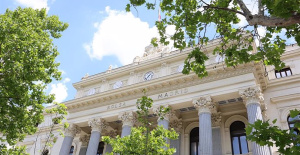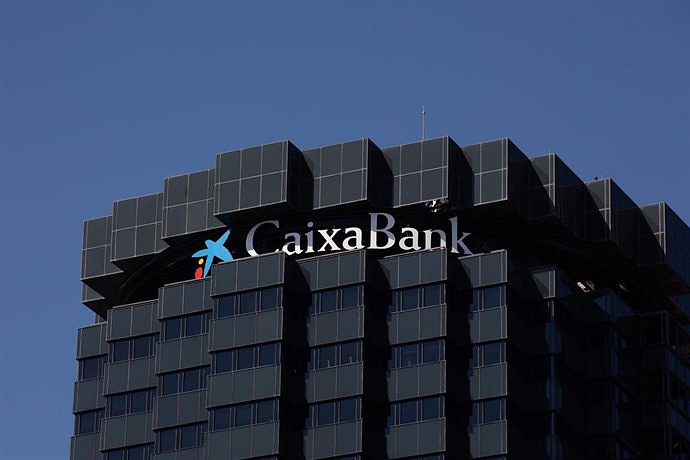26. November 2018 share Facebook Twitter LinkedIn xing mail
In the late high middle ages, towards the end of the 15. Century, the money system was always unstable. After over 300 years of economic prosperity, the princes of Europe, apparently lost. Many of the country gentlemen, it is exaggerated, however, with the regular renewal of that metal coins. The only Form of tax, the regular Exchange of "old" in "new" money. This was replaced in many regions, for example in a ratio of ten to eight: For ten old coins you received eight new. In this way, the money remained in the river, and the Prince made a profit of 20 per cent.
As the country gentlemen began to change in increasingly bad relationship, about six to ten, or even fourteen, accepted, the people, the almost worthless have become money. Calls were more exciting to a new, value for money, according to. The solution of the so-called "Eternal Pfennig" as well as precious metals, which were, in many places, always acted more as a currency.
The monetary system of that time was strongly influenced regional and its manifestations in each area a little differently. It is clear, however, that the first gold coins of this era in Italy in the 13. Century were minted. From there, they spread, as well as silver coins, in the whole of Europe. Crusades in the East and, later, the discovery of America in the West also opened up new sources of Gold for Europe, the gold-greed of the people fired.
Why was made of Gold, paper money?The advantage of gradually establishing a precious-metal currencies was obvious: He was the impairment of the earned money. However, the increasingly popular had disadvantages at the end of the form of money also: For a statement, it was impractical, because Gold is not only very difficult, but also complicated to divide. To pay smaller sums with the precious metal, was difficult. On the other, could not be inflated in the case of Gold, the money supply unlimited. In order to Finance such wars, this as a disadvantage. Paper money had better properties: It was easier to divide in smaller units (and was therefore a better unit of account and a better medium of exchange, are two other important core functions for money), was easier to transport, and because of its Gold-cover as good a store of Value like Gold. Originally, money was the paper a receipt for the possession of "real" money, i.e. precious metals.
The development of paper moneyIt is difficult to determine the exact hour of birth of the paper money. Its origins are likely to lie also in Italy. Cheques and receipts over the possession of cash, i.e. Gold or silver coins, were issued on tables and banks in order to Finance the Crusades. Therefore, the term "banks".
The next known Station can be found in 1483 in Spain. There was first printed paper money, because of a lack of "real" coins prevailed. Here is a typical property of paper reflected money that was often used, in order to increase the money supply. Both in Italy and in Spain the war was the triggering factor of large sums of money to reprint.
The first book of moneyhandle The new form of money in the coming centuries. The first Bank, which began coverage of paper money as a Standard, was from 1609 the Bank of Amsterdam. At the time, the resulting Form of money is called paper money. Book money means a claim against the Bank, to the then in books held the quantity of money at any time in Gold or silver coins to exchange.
paper money is also in our time the dominant Form of money. The electronic money in our current accounts is called also Bank money or scriptural money, and referred our claim to the Bank for disbursement of cash, the actual, legally defined means of payment. Cash only, referred to in today's world, no gold coins, but by the Central Bank to print Euro notes.
The expansion of the money supplypaper money is nowadays called "sight deposits". The reason is that you could then view, at any time, Gold or silver coins. As banks noted, however, that the people exchanged their paper money is always less against your Gold or silver coins, they began, finally, to the precious metal cover and loosen up. As long as not all the people wanted at the same time trade in your paper money, it was enough to have only about 10 percent of the loans awarded money is actually in Gold. The only concern would be what we would call today a "Run on the Bank" – when all or a disproportionately high number of people would at the same time to withdraw their Gold.
The European history in short form: United States happened from 1880 to 1971The United States has experienced from 1880 to 1971, the what is happening in Europe over the centuries. During the year 1880, the US Dollar was deposited, complete with Gold and it is received at the Bank for the submission of a US dollar, Gold, was giving way to this Standard in the coming centuries after the other. After the first world war, a gold exchange standard came to, and after the Second world war, the Bretton Woods agreements followed. According to this 35 US dollars an ounce of Gold value. The U.S. held the world's largest gold reserves and the US dollars were deposited with all other currencies, indirectly with Gold. However, when the French wanted to stand out in the year 1971 in the USA, deposited Gold, collapsed the System; either the US does not have the necessary Gold, or they would not give it simply.
The Lightning-dystopia: could So. also from the Bitcoin debt moneyBitcoin is designed as a strong store of Value and a limited commodity, just like Gold But just as it is impractical to use Gold in everyday life as a means of payment, this is also the Bitcoin to date is difficult – the scaling problem with high fees and low transaction speed greet. Ultimately, both the physical, as well as the digital Gold in their pure Form, present themselves as the best if everyday life is of limited use.
Similar to Gold, ultimately, the practical paper, scissors had to money soft paths also in the case of Bitcoin, more and more Second-Layer solutions, your way is left by which the Blockchain part. In the case of these proposals, such as the Lightning Network, are sent, in principle, no Bitcoin, but ultimately, Bitcoin-funded, digital notes, which will be transferred via payment channels. Does that not make you also known? Our money don't seem to be originally gold covered notes?
As a inflation of the Bitcoin could look like?we are Transferring the history of gold currencies on the digital Gold, the next step would be, at some point, the say amount of money – the seem to be out of the gift of Bitcoin to blame- yet again. As people have withdrawn their Gold in the Bank at some point, it could be that Bitcoin would remain on the Blockchain and the only even with digital notes would be traded.
at that Time, the goldsmiths, which could store the precious metals is well developed, and banks. We would invent a digital dystopia, the idea of the Lightning Network, would also, Bitcoin Central distribution points (possibly so-called Lightning-Hubs?) . Presumably, this distribution would represent the largest payment channels. This would manage all the Bitcoin and might be eventually able to do this, more "Bitcoin-bills", as there is Bitcoin.
Ready-to-digital system of debt money would be. Completely transparent and without the hassle of cash. The original Bitcoin idea would be "hijacked". In this way, the scaling problem would be solved – with the basic idea of the Blockchain, the wouldn't have to do much.
How realistic is such a dystopia?Admittedly, This dystopia is perhaps a bit far-fetched. As the US President Nixon giving up in the ' 70s, the gold standard, it became clear that the United States may have had not so much Gold as they originally information. Even if Bitcoin has a lot in common with Gold, there is an important difference. The Blockchain is publicly viewable. No one can have her locked behind a vault and say he displays more Bitcoin than his address on the Blockchain. An expansion of the output of the Bitcoin debt is not seem by the (still fictional) Central distribution points appears to be so very realistic.
approaches like the Lightning Network, are urgently needed. If I buy a Cup of coffee, it is not necessary for every purchase the the consent of the whole cafeteria, to seek; there must be a way that it only requires the consent of the seller and of me. But for all its usefulness, it is also important to make the dangers of Second-Layer solutions. Decentralization and the Blockchain must remain as a fundamental principle.
On-Chain vs. Off-Chain: Where is the healthy middle ground?A very balanced proposal was 2017 in the draft SegWit2x. This design was not an "Either-Or", but rather had integrated both scaling solutions. He found the prospect of the possibilities of the On-Chain-scaling by increasing the block size more out of it. At the same time SegWit2x paved the way for the Lightning Network, as soon as the On-Chain-launches-scaling to its limits. Why a strong Blockchain AND the possibility of a Second-Layer-implement solutions? This is a plea against a hardened tomb-struggle between the two, in the meantime, ideologically shaped bearing, with a view to integrating the benefits.

 Exploring Cardano: Inner Workings and Advantages of this Cryptocurrency
Exploring Cardano: Inner Workings and Advantages of this Cryptocurrency Seville.- Economy.- Innova.- STSA inaugurates its new painting and sealing hangar in San Pablo, for 18 million
Seville.- Economy.- Innova.- STSA inaugurates its new painting and sealing hangar in San Pablo, for 18 million Innova.- More than 300 volunteers join the Andalucía Compromiso Digital network in one month to facilitate access to ICT
Innova.- More than 300 volunteers join the Andalucía Compromiso Digital network in one month to facilitate access to ICT Innova.-AMP.- Ayesa acquires 51% of Sadiel, which will create new technological engineering products and expand markets
Innova.-AMP.- Ayesa acquires 51% of Sadiel, which will create new technological engineering products and expand markets The AP calls the US veto to recognize Palestine as a full member of the UN "immoral"
The AP calls the US veto to recognize Palestine as a full member of the UN "immoral" The IAEA affirms that there is "no damage" to Iran's nuclear facilities after the attack attributed to Israel
The IAEA affirms that there is "no damage" to Iran's nuclear facilities after the attack attributed to Israel The Ibex 35 falls 0.8% at the opening and loses 10,700 points due to tensions in the Middle East
The Ibex 35 falls 0.8% at the opening and loses 10,700 points due to tensions in the Middle East Brent oil threatens to exceed $90 per barrel due to tensions in the Middle East
Brent oil threatens to exceed $90 per barrel due to tensions in the Middle East How Blockchain in being used to shape the future
How Blockchain in being used to shape the future Not just BTC and ETH: Here Are Some More Interesting Coins Worth Focusing on
Not just BTC and ETH: Here Are Some More Interesting Coins Worth Focusing on LIFE SPOT manages to develop new green treatments that eliminate groundwater contamination
LIFE SPOT manages to develop new green treatments that eliminate groundwater contamination València Game City is born to promote the video game industry and position this city as a leader in the sector
València Game City is born to promote the video game industry and position this city as a leader in the sector A team of UPV and iPRONICS manufactures the first programmable and multifunctional photonic chip on the market
A team of UPV and iPRONICS manufactures the first programmable and multifunctional photonic chip on the market 'Science and Reeds' returns with talks about "the mystery of the lost socks" or the vinegar fly
'Science and Reeds' returns with talks about "the mystery of the lost socks" or the vinegar fly A million people demonstrate in France against Macron's pension reform
A million people demonstrate in France against Macron's pension reform Russia launches several missiles against "critical infrastructure" in the city of Zaporizhia
Russia launches several missiles against "critical infrastructure" in the city of Zaporizhia A "procession" remembers the dead of the Calabria shipwreck as bodies continue to wash up on the shore
A "procession" remembers the dead of the Calabria shipwreck as bodies continue to wash up on the shore Prison sentences handed down for three prominent Hong Kong pro-democracy activists
Prison sentences handed down for three prominent Hong Kong pro-democracy activists ETH continues to leave trading platforms, Ethereum balance on exchanges lowest in 3 years
ETH continues to leave trading platforms, Ethereum balance on exchanges lowest in 3 years Investors invest $450 million in Consensys, Ethereum incubator now valued at $7 billion
Investors invest $450 million in Consensys, Ethereum incubator now valued at $7 billion Alchemy Integrates Ethereum L2 Product Starknet to Enhance Web3 Scalability at a Price 100x Lower Than L1 Fees
Alchemy Integrates Ethereum L2 Product Starknet to Enhance Web3 Scalability at a Price 100x Lower Than L1 Fees Mining Report: Bitcoin's Electricity Consumption Declines by 25% in Q1 2022
Mining Report: Bitcoin's Electricity Consumption Declines by 25% in Q1 2022 Oil-to-Bitcoin Mining Firm Crusoe Energy Systems Raised $505 Million
Oil-to-Bitcoin Mining Firm Crusoe Energy Systems Raised $505 Million Microbt reveals the latest Bitcoin mining rigs -- Machines produce up to 126 TH/s with custom 5nm chip design
Microbt reveals the latest Bitcoin mining rigs -- Machines produce up to 126 TH/s with custom 5nm chip design Bitcoin's Mining Difficulty Hits a Lifetime High, With More Than 90% of BTC Supply Issued
Bitcoin's Mining Difficulty Hits a Lifetime High, With More Than 90% of BTC Supply Issued The Biggest Movers are Near, EOS, and RUNE during Friday's Selloff
The Biggest Movers are Near, EOS, and RUNE during Friday's Selloff Global Markets Spooked by a Hawkish Fed and Covid, Stocks and Crypto Gain After Musk Buys Twitter
Global Markets Spooked by a Hawkish Fed and Covid, Stocks and Crypto Gain After Musk Buys Twitter Bitso to offset carbon emissions from the Trading Platform's ERC20, ETH, and BTC Transactions
Bitso to offset carbon emissions from the Trading Platform's ERC20, ETH, and BTC Transactions Draftkings Announces 2022 College Hoops NFT Selection for March Madness
Draftkings Announces 2022 College Hoops NFT Selection for March Madness





















